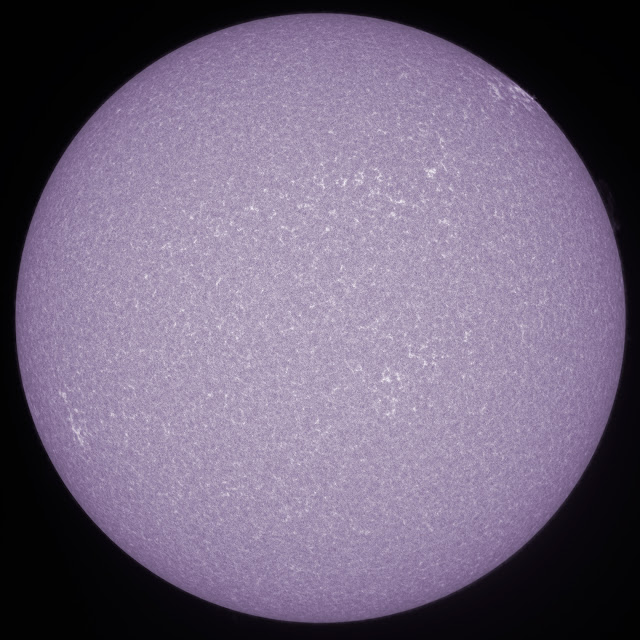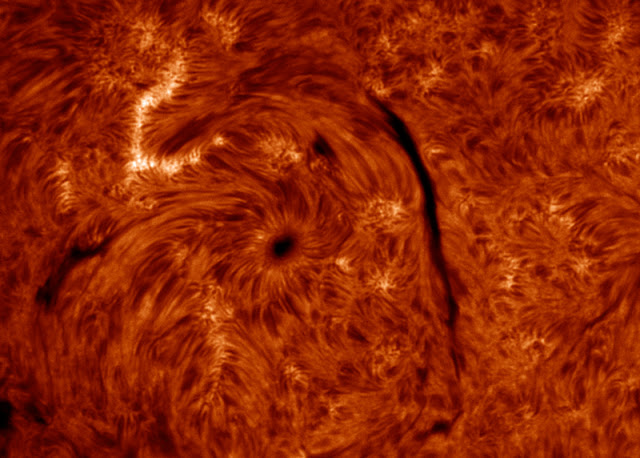I've had my Lunt50 for a month or so now, but, at this time of year here in the UK it's never the best for observing with the low sun and less than ideal weather. I had first light proper last weekend, but in my enthusiasm lost all logic and reasoning and as a result never really ended up with an image I was 100% happy with through continually fiddling with the pressure tuner and double stack unit. Since then i'd given it some measured thought as to setting up the scope, and was ready for whenever the sun may reappear.
The weather forecast was not great for the weekend, but around Sunday lunchtime the clouds broke up a bit giving some transient gaps so I decided to setup and see if I could capture anything. Tuning the scope with some features on the disk was really easy compared to last weekends blank sun, and as a result I decided to get some images in single stack and double stack setup. I'm quite pleased with the performance in single stack, it reveals a lot more detail than my SM40 etalon would. SS image was at prime focus with the PGR CH3.
In previous threads and about the web there has been considerable discussion about the suitability of the LS50 as a scope for imaging in that people cannot reach focus. I struggled with the B600 that came with the scope, but the obvious solution was to use the Coronado BF15, this has much less optical length than the B600 and then reaching focus with a variety of configurations is possible. As an added benefit the BF15 lets through considerably more light than the B600 - I was getting 7ms DS 4ms SS with the B600, with the BF15 it is 1ms SS 3ms DS, quite a difference!
A side by side comparison of the black and white images:


















































